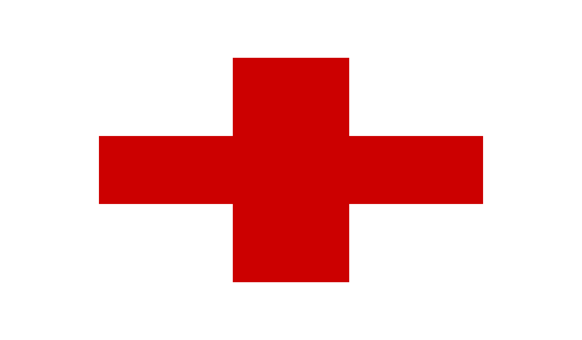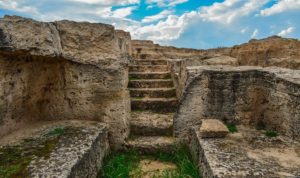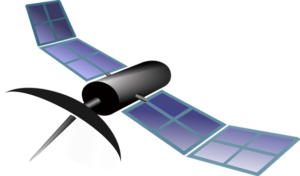Remote sensing and GIS have become very useful techniques in disaster management. Disasters mostly make drastic environmental changes. That is why large amounts of spatial data are needed to asses and manage environmental impacts. Independent coverage of wide areas is obtained from observing the earth and analyzing broad spectrum crises. It provides detailed information over large areas for many different types of crises. Over the last decade, the impacts of the disaster have been severe. Besides, the number of people and the costs of management have increased. There is no major cause but a few several factors that lead to disasters. For example, population, infrastructure and the vulnerabilities of the societies.
Disaster management incorporates a lot of practices and techniques. It is very important because it mainly deals with saving the lives of people. Furthermore, because of the increase in both manmade and natural disasters accurate geographic information has increased in demand. Not only accurate geographic information but also it has to be up to date and comprehensive. Satellite images are the most common sources of information during natural disasters. Disaster management involves analyzing the situation, putting protective measures, rescuing and treating people. Also, it involves coming up with proper contingency plans.
Applications of remote sensing in disaster management
1. Disaster mapping
Disaster mapping involves drawing of areas that are affected by manmade or natural disasters. It is possible to define areas that people are undergoing troubles such as losing properties, infrastructure, and even their own lives. Ground-based observations can be used but remote sensing brings in more detailed information. Some of the tools and techniques of remote sensing available for disaster mapping are the use of satellite images or aerial photographs. The information garnered using these techniques is enough to map the affected areas and also send relevant data to the rescue teams. Disaster mapping is an important tool for assessing and conveying geographic information of the affected areas. GIS in disaster management is mostly used for storage while remote sensing is beneficial for map preparation.
2. Landslides assessment and analysis
Landslide mapping involves a couple of factors such as analysis of the past landslide occurrences. Furthermore, the analysis is done by their location, incidence, and size concerning other environmental factors that cause land movements. The zonation map of landslides contains an inbuilt forecasting feature making it a probabilistic nature. Some of the data that this map can provide includes, slope steepness, Geology, Rainfall density of drainages and land cover. However, to remain relevant intensive efforts have to be made. For example, collecting, sorting, storing and evaluation data.
3. Earthquakes
Earthquake data for the last 100 years has been collected, stored and analyzed by the national seismic telemetry network. Most epicenters tend to follow certain plate boundaries. Seismic maps are prepared following the epicenter maps. The code for making earthquake resistant structures is map zoning. Soil data, geological factors, and structural designs are also used to make building codes apart from the earthquake data. A combination of seismic hazards is a major risk. Seismic risk assessment using remote sensing is very important because it helps researchers predict the occurrence of earthquakes.
4. Search and rescue
Immediately after a disaster has struck an area, search and rescue begin. Local volunteers are the first to help then district and national rescuers follow. A team of professionals uses remote sensing data to find safe regions to move the affected. If the situation appears to be very bad other units such as the army are called in to help. The aim is always to help as many people as possible during any disaster. GIS and remote sensing help to save lives indirectly. Both the army and independent devices collect data using remote sensing and store using GIS.
5. Flooding management

Floods are very dangerous because they can cause the deaths of many people. Besides that floods lead to the loss of property worth a lot of money. To avoid all these situations, remote sensing techniques are used to predict heavy rainfall. Data from tools such as the satellites and weather centers are collected and transmitted to the relevant authorities for analysis. These authorities send warning to people living in the affected area before the situation gets worse.
6. Identification of safe zones
During disaster management, remote sensing is used to identify safe zones for rehabilitation. This can be achieved using satellite images and GIS data. Victims are put into the rehabilitation zones until the disaster is over. Without the availability of these techniques, disaster management can be a very hard task.
7. Planning of evacuation operation
Evacuation planning is very sensitive and so it needs accurate and real-time data. In case of fires in buildings or terror attacks satellite images can show safe areas to plan for evacuation. Because time is a very important factor in such operations, the emergency unit needs fast accurate data which is easy to analyze. All that can be comfortably drawn from the GIS and remote sensing techniques. If the disaster is a weather condition such as a hurricane or other storms, satellite data can be used to spot safe zones. Furthermore in such scenarios, the rescue teams always have a day or two to prepare
8. Identification of suitable construction locations
Construction is a very sensitive field because it can be hit by a disaster. Before construction begins, one has to consider many factors. For example, people want their houses safe and that means very far away from any possible disasters. These can be landslides, hurricanes, floods and many other types of natural disasters. Constructing tall buildings in an earthquake-prone area is a risky business. So remote sensing and GIS data are used to identify those areas that are prone to natural disasters before choosing an area for construction.
9. Reconstruction of damaged sites
Damaged sites are constructed with the help of GIS and remote sensing data. If there is a possibility of another natural disaster then reconstruction is stopped until it’s over. Remote sensing data can be used to avoid areas that are prone to landslides when reconstructing highways



